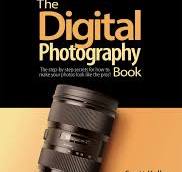The Evolution of Digital Photography
Photography has undergone a remarkable transformation with the advent of digital technology. Gone are the days of film rolls and darkrooms; today, anyone with a smartphone or a digital camera can capture high-quality images with ease.
Digital photography offers numerous advantages over traditional film photography. One of the key benefits is the instant feedback that digital cameras provide. Photographers can review their shots immediately, adjust settings on the fly, and retake photos if needed, leading to greater precision and efficiency.
Furthermore, digital photography has democratized the art form, making it more accessible to a wider audience. With social media platforms and online galleries, photographers can easily share their work with people around the world, gaining exposure and recognition in ways that were previously unimaginable.
The evolution of digital photography has also spurred innovation in image editing software. Programs like Adobe Photoshop have revolutionized post-processing techniques, allowing photographers to manipulate and enhance their images with incredible flexibility and control.
As camera technology continues to advance, we are witnessing new possibilities in digital photography unfold. From high-resolution sensors to advanced autofocus systems, modern cameras offer photographers unprecedented creative freedom and technical capabilities.
In conclusion, digital photography has fundamentally changed the way we capture, edit, and share images. It has opened up new avenues for artistic expression and storytelling, empowering photographers of all levels to push boundaries and explore the endless potential of this dynamic medium.
Understanding Digital Photography: Types, Origins, and Importance
- What are the 2 types of digital photography?
- What is this digital photography?
- Who introduced digital photography?
- Why is digital photography important?
What are the 2 types of digital photography?
In the realm of digital photography, there are two primary types that are commonly distinguished: “RAW” and “JPEG” formats. RAW format preserves all the data captured by the camera sensor without any processing, offering maximum flexibility for editing and adjustments in post-production. On the other hand, JPEG format compresses the image data to create smaller file sizes, making it more convenient for sharing and viewing but with less room for extensive editing without loss of quality. Each type has its own advantages and use cases, catering to different preferences and needs of photographers in their creative pursuits.
What is this digital photography?
Digital photography refers to the process of capturing, storing, and manipulating images using electronic devices such as digital cameras or smartphones. Unlike traditional film photography, which relies on chemical processes to develop images, digital photography uses sensors to convert light into electronic signals that are then processed and stored digitally. This technology allows photographers to instantly review and edit their photos, sharing them online or printing them with ease. Digital photography has revolutionized the way we capture and interact with images, offering versatility, convenience, and endless creative possibilities in the modern age of visual storytelling.
Who introduced digital photography?
The introduction of digital photography can be attributed to Kodak engineer Steven Sasson, who is credited with creating the first digital camera in 1975. This groundbreaking invention marked the beginning of a revolution in photography, paving the way for the digital imaging technologies that we rely on today. Sasson’s pioneering work laid the foundation for a new era of visual storytelling and image capture, transforming the way we document and share our experiences through the lens of a digital camera.
Why is digital photography important?
Digital photography is important for a multitude of reasons in today’s visual-centric world. One key aspect is its accessibility and convenience, allowing individuals of all skill levels to capture moments and express their creativity with ease. The instant feedback provided by digital cameras enables photographers to refine their skills quickly and experiment without the cost and time constraints associated with traditional film photography. Moreover, the ability to easily share and distribute digital images online has revolutionised communication and storytelling, making it a powerful tool for personal expression, documentation, marketing, and artistic exploration. Ultimately, digital photography has become an integral part of modern life, shaping how we perceive and interact with the world around us.

